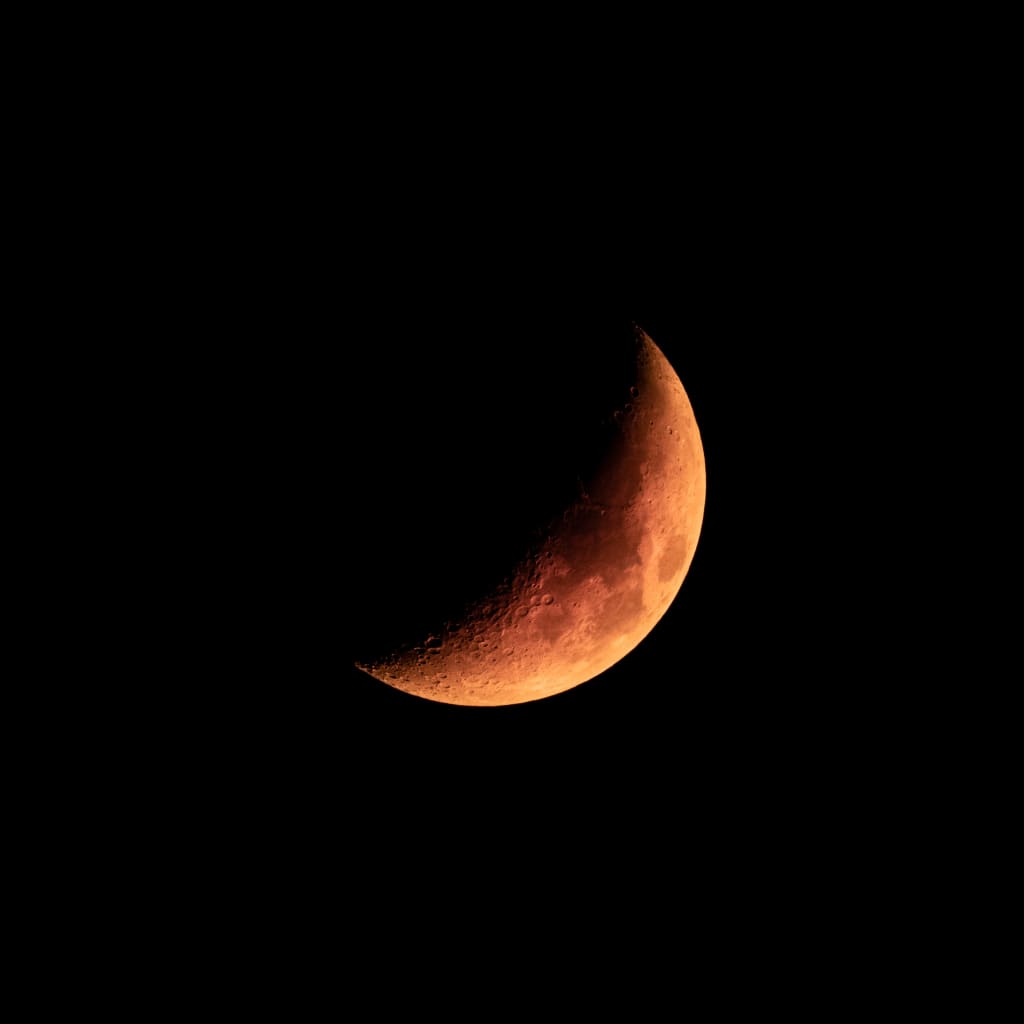
The sight of a red moon is a captivating and mystical event that has captured the human imagination for centuries. Often associated with various myths, legends, and superstitions, the phenomenon of a red moon has both scientific and cultural significance. In this exploration, we will delve into the reasons behind the occurrence of a red moon, its cultural interpretations, and the scientific understanding that underpins this celestial spectacle.
I. What Causes a Red Moon?
A red moon, also known as a blood moon, is not an everyday occurrence but rather a rare event. It happens during a lunar eclipse when the Earth aligns itself perfectly between the Sun and the Moon. A lunar eclipse occurs when the Earth's shadow passes over the Moon, temporarily blocking out the Sun's light. However, what distinguishes a red moon from a regular lunar eclipse is the reddish hue that envelops the lunar surface.
The reddish coloration of the moon during an eclipse is primarily due to the scattering of sunlight as it passes through the Earth's atmosphere. To understand this phenomenon, it's crucial to grasp the concept of Rayleigh scattering. This is the same optical effect that causes our daytime sky to appear blue. During a lunar eclipse, the Earth's atmosphere acts as a sort of filter for sunlight. As sunlight passes through the atmosphere, it gets dispersed in all directions, with shorter wavelengths (blue and violet) scattering more than longer wavelengths (red and orange).
The remaining sunlight that manages to reach the Moon is primarily composed of these longer wavelengths, creating a reddish glow. This effect is often referred to as the "Tyndall effect." The exact hue of the red moon can vary from a deep crimson to a lighter orange, depending on various factors such as the composition of Earth's atmosphere at the time of the eclipse.
II. The Cultural Significance of the Red Moon
Throughout human history, the sight of a red moon has been met with awe, fear, and wonder. Many cultures and societies have developed their own interpretations and beliefs surrounding the phenomenon, often imbuing it with deep spiritual or supernatural significance.
1. Myths and Legends
In various mythologies and folklore, a red moon is frequently seen as an omen or a symbol of significant change. In some cultures, it is associated with prophecy and foretelling of future events. For example, in ancient Norse mythology, a red moon was believed to foretell the arrival of Ragnarok, the end of the world. In Chinese folklore, a red moon was seen as a symbol of impending disaster or conflict.
2. Religious Symbolism
In religious contexts, the red moon has often been linked to divine messages or judgments. In Christianity, the Book of Joel in the Old Testament mentions the moon turning to blood as a sign of the impending Day of the Lord. Similarly, in Islamic tradition, a red moon can be interpreted as a sign of the Day of Judgment.
3. Cultural Celebrations
In some cultures, lunar eclipses, including red moons, are celebrated with rituals and ceremonies. For example, the indigenous peoples of North America have traditions and ceremonies associated with lunar eclipses. The Navajo, for instance, believe that lunar eclipses are a time for reflection and renewal.
4. Modern Interpretations
In the modern era, the red moon still captures the public's imagination. Social media and the internet have made it easier for people worldwide to share their experiences and photographs of lunar eclipses, leading to a renewed interest in the celestial event. While many people no longer associate lunar eclipses with supernatural phenomena, they continue to appreciate the beauty and rarity of a red moon.
III. Scientific Understanding and Exploration
While cultural interpretations of a red moon are fascinating, it's essential to emphasize the scientific basis of this celestial event. Understanding the physics behind a red moon allows us to appreciate the natural world and the universe at large.
1. Earth's Atmosphere and Light Scattering
As previously mentioned, the red color of the moon during a lunar eclipse is a result of the scattering of sunlight by the Earth's atmosphere. This scattering phenomenon, known as Rayleigh scattering, is responsible for the colors we see in the sky during the day.
2. Earth's Atmosphere Variations
The exact appearance of a red moon can vary from one eclipse to another. This is due to the variations in Earth's atmosphere at the time of the eclipse. Factors such as air pollution, volcanic eruptions, and other atmospheric conditions can influence the amount and type of particles in the atmosphere, affecting the coloration of the moon.
3. Studying Lunar Eclipses
Lunar eclipses, including red moons, are not only a visual spectacle but also an opportunity for scientific observation. Astronomers and researchers use lunar eclipses to study the Earth's atmosphere, as well as the Moon's surface and compo
About the Creator
Reader insights
Outstanding
Excellent work. Looking forward to reading more!
Top insight
Excellent storytelling
Original narrative & well developed characters






Comments (3)
very nice
Wow
Outstanding ❤️💚💚💚❤️💚